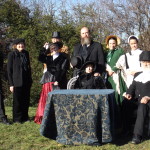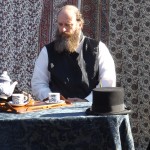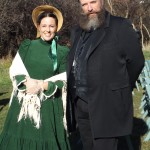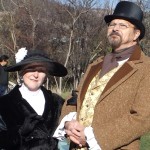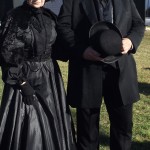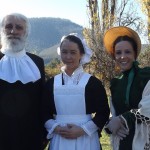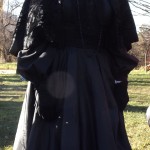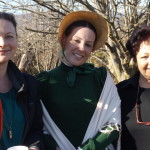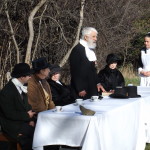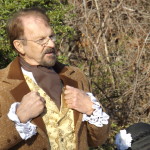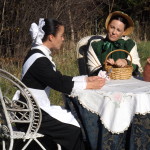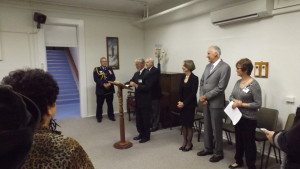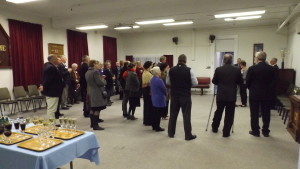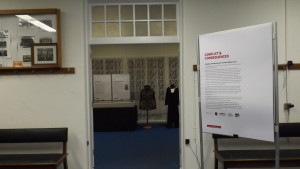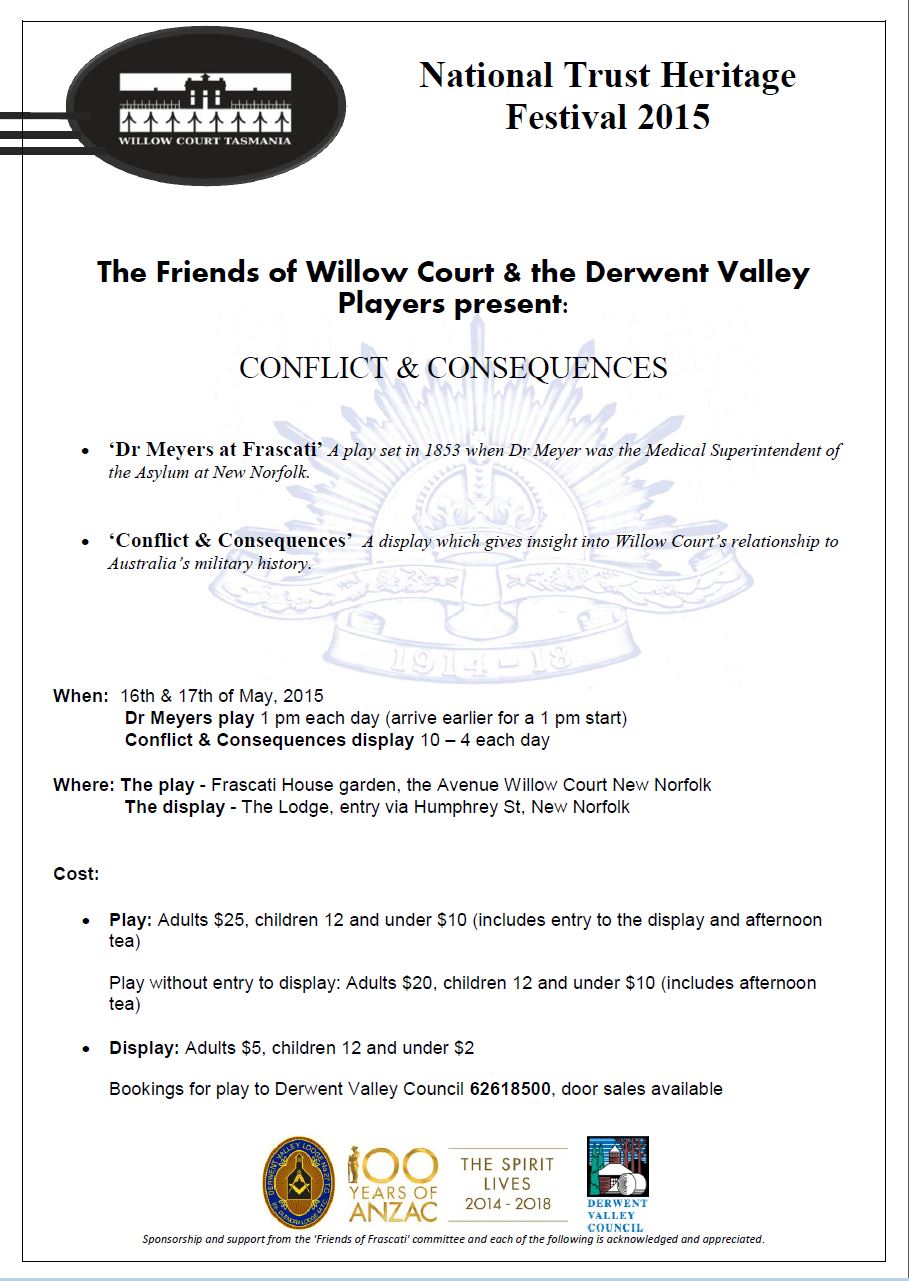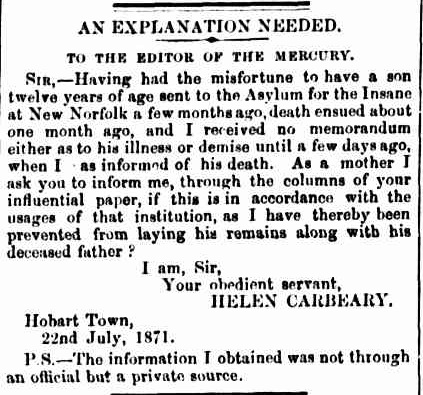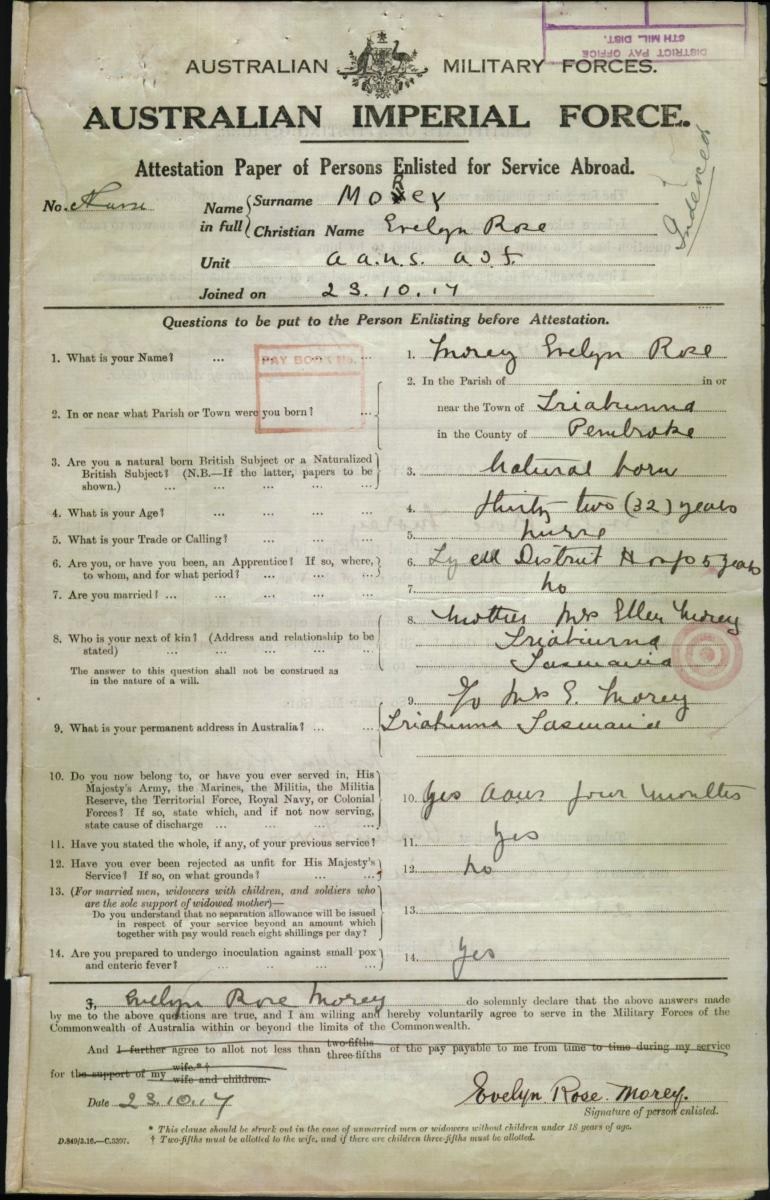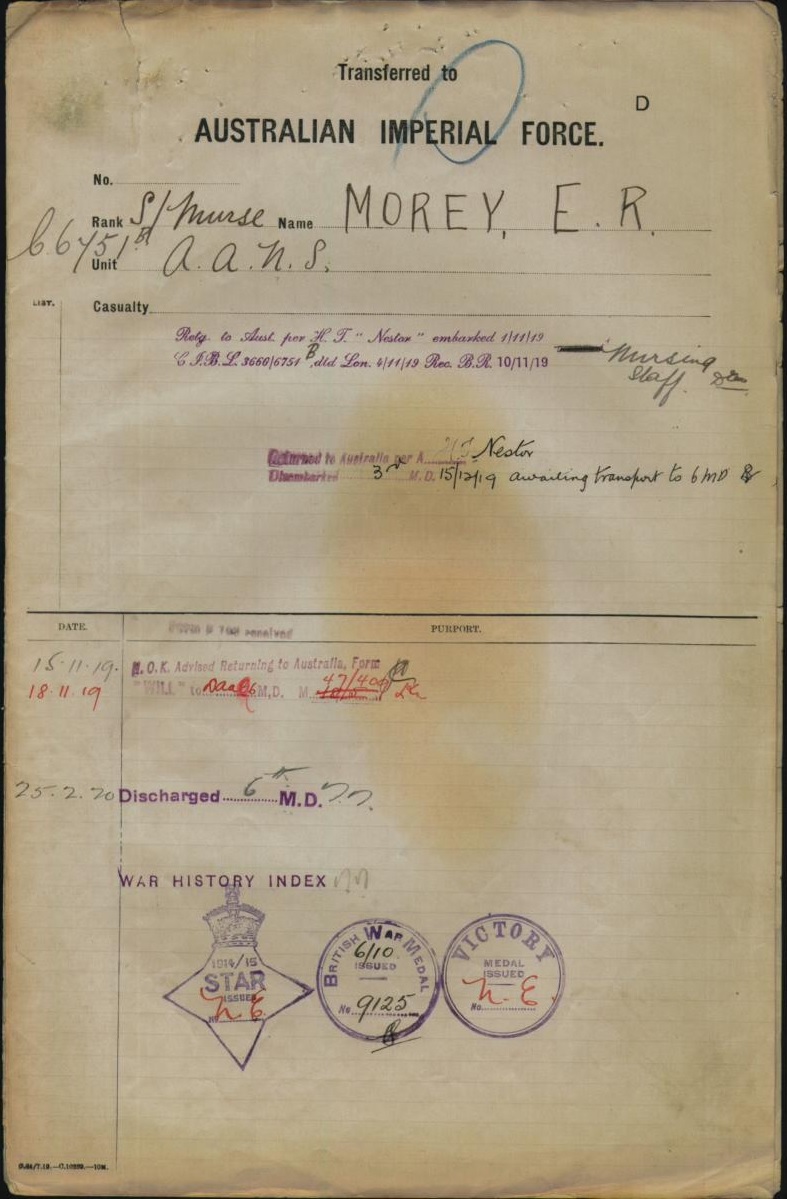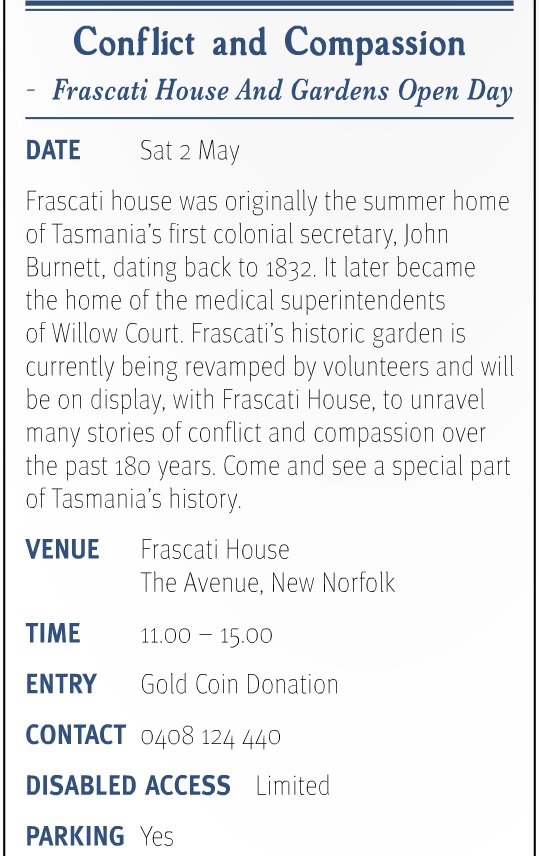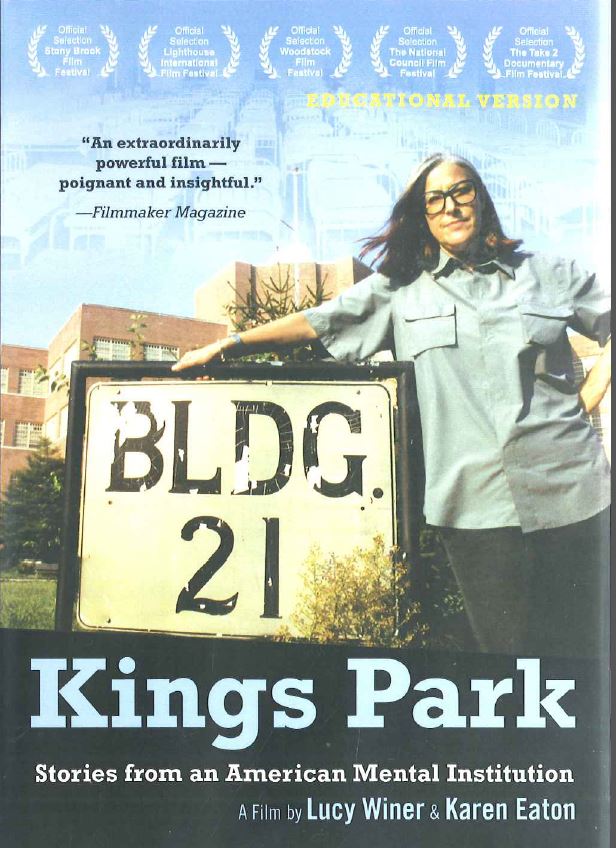 It has been a big weekend at Willow Court and the place was buzzing today and yesterday with anyone who has a passion for the place. Friday started early for some and was the accumulation of months of research and sourcing of information, personal stories, interviews, meetings, rehearsals and the extensive hunting for authentic items for display and for costumes for the drama. The Governor of Tasmania Professor Kate Warner opened the Friends of Willow Court Display and Play which were advertised during the Tasmanian Heritage Month. Along with invited guests she looked through the professional display which was an intersection between the lives of people who served in conflicts or behind in the local community effort and the Lachlan Park Hospital’s history and the lives that these people had before, after and during such conflict. Limited themes were chosen which told this story and also the story of the consequences of such conflict and the care and compassion of others. The generous support of many people and businesses has to be acknowledged because without this community effort this wouldn’t have happened. A special thank you to those families that allowed us to respectfully tell the stories of their loved ones, patient and worker alike. Of particular interest to me was the story of returned serviceman Bruce McLean, who’s story of life within Millbrook Rise post WWII was told and while Bruce wasn’t the only person to return after conflict and time incarcerated as a prisoner of war, his is one of the limited stories we have permission to share.
It has been a big weekend at Willow Court and the place was buzzing today and yesterday with anyone who has a passion for the place. Friday started early for some and was the accumulation of months of research and sourcing of information, personal stories, interviews, meetings, rehearsals and the extensive hunting for authentic items for display and for costumes for the drama. The Governor of Tasmania Professor Kate Warner opened the Friends of Willow Court Display and Play which were advertised during the Tasmanian Heritage Month. Along with invited guests she looked through the professional display which was an intersection between the lives of people who served in conflicts or behind in the local community effort and the Lachlan Park Hospital’s history and the lives that these people had before, after and during such conflict. Limited themes were chosen which told this story and also the story of the consequences of such conflict and the care and compassion of others. The generous support of many people and businesses has to be acknowledged because without this community effort this wouldn’t have happened. A special thank you to those families that allowed us to respectfully tell the stories of their loved ones, patient and worker alike. Of particular interest to me was the story of returned serviceman Bruce McLean, who’s story of life within Millbrook Rise post WWII was told and while Bruce wasn’t the only person to return after conflict and time incarcerated as a prisoner of war, his is one of the limited stories we have permission to share.
Partners include:
Returned Serviceman’s League (RSL), New Norfolk
Masonic Lodge, New Norfolk
Tasmanian Heritage Council
Derwent Valley Players, New Norfolk
Derwent Valley Council
The Friends of Frascati, Willow Court
The Military Museum. Hobart
Business and organisations include:
Willow Court Antiques, New Norfolk
Antiques Warehouse, Hobart
NIDA School of acting, Sydney.
Coles Supermarket, Bridgewater
Woolworth’s Supermarket, New Norfolk
Top of the town Bakery, New Norfolk
The Handyman, Chris Salt, New Norfolk
St Mary’s College
Personal Supporters:
Mayor Martyn Evans
Craig Farrell MLC
Eric Hutchinson MP
Family of all the people displayed.
